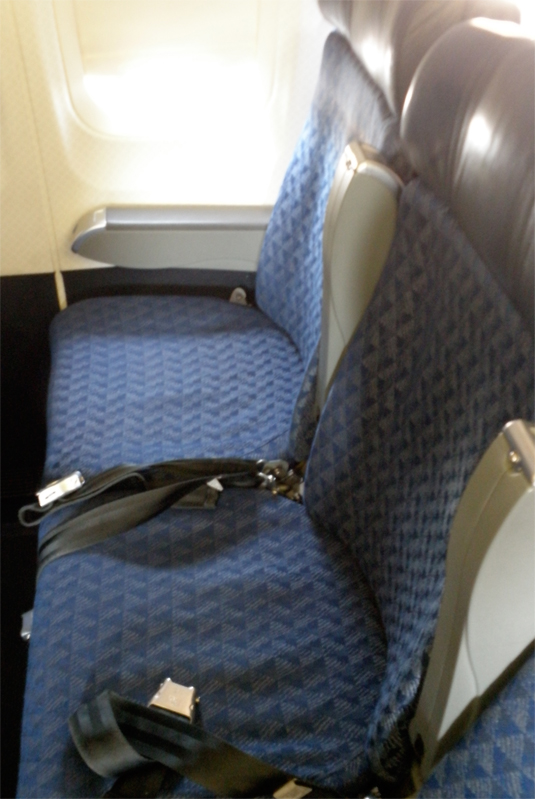
September 8, 2012
Places That Work: Rocking Chairs in Waiting Areas
Air travel is a miserable experience these days and giving travelers some sense control makes the process somewhat less onerous.Some U.S. airports, for instance, provide rocking chairs for waiting passengers. These rockers offer another seating option to people, and having a choice, at least from a reasonable number of options, gives us a psychological boost. […]
Air travel is a miserable experience these days and giving travelers some sense control makes the process somewhat less onerous.
Some U.S. airports, for instance, provide rocking chairs for waiting passengers. These rockers offer another seating option to people, and having a choice, at least from a reasonable number of options, gives us a psychological boost. In St. Louis (pictured), there are enough of these chairs in each waiting area so that small groups can arrange themselves as they see fit – making eye contact or not, gathered around a young child, looking at images spread on the floor or on a computer screen as a client pitch is drafted.
There is also a health benefit. Rocking in the chairs vigorously enough can release endorphins into your bloodstream, which boost your mood just as surely as your sense of control does.
 A row of airline seats, all to one’s self, also provides some measure of environmental control, although few of us get the opportunity to stretch out and sleep in flight. As the single occupant of this row of seats you don’t have to deal with your fellow travelers, fight over window shade placements or deal with the surly occupant of an isle seat. And, of course you avoid the chatty stranger next to you.
A row of airline seats, all to one’s self, also provides some measure of environmental control, although few of us get the opportunity to stretch out and sleep in flight. As the single occupant of this row of seats you don’t have to deal with your fellow travelers, fight over window shade placements or deal with the surly occupant of an isle seat. And, of course you avoid the chatty stranger next to you.
We know that user control is important for our well being. Travel environments that provide such comfort become better than we have grown to expect, but they have a long way to go before we can call them places that work.
Sally Augustin, PhD, is a principal at Design with Science . She is also the editor of Research Design Connections and the author of Place Advantage: Applied Psychology for Interior Architecture (Wiley, 2009). She can be reached at [email protected]
This post is part of a series of Places that Work.





